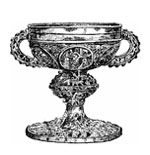
Liturgical Majesty & Solemnity
EDITORIAL
This Editorial must be written in the first person. When your Editor was a Protestant at the rough-and-tumble Dorsey High School in Los Angeles, I happened to walk into a Catholic church for the first time. This was in my senior year in 1961 before Vatican II. It was a weekday about 4 PM (no Mass in process), and not in a good part of town.
I was mesmerized. It was dark, but there were many votive candles lit. There were several people praying on kneelers. The altar was against the wall. Nothing like our Protestant Reformed churches.
I entered a pew. I put the kneeler down and prayed.
I will always remember that experience.
In my sophomore year at UCLA, I was becoming disconcerted with my Reformed Protestant church. I inquired about the Episcopal Church. I remembered my experience in the Catholic church. The Episcopal Church seemed the same. Votive candles lit, people praying on kneelers, the altar against the wall. It also had other things I associated with the Catholic Church: a Communion rail, sanctus bells, incense, genuflection, the Tabernacle up front on the altar, women and girls wearing chapel veils and hats, real stained-glass windows, and altar boys. In my junior year, I went up to the University of California at Berkeley, where I was confirmed as an Episcopalian.
You May Also Enjoy
How much of Chinese daily and intellectual life, so utterly foreign to men from both Athens and Jerusalem, can be carried over into communion with Rome?
Kerouac was “not ashamed to wear the crucifix of my Lord... I believe in beatitude and that God so loved the world that he gave his own begotten son to it.”
Newman expressed negative views about a corporate reunion between Anglicans and Catholics; he valued real conversions more than such far-fetched schemes.

